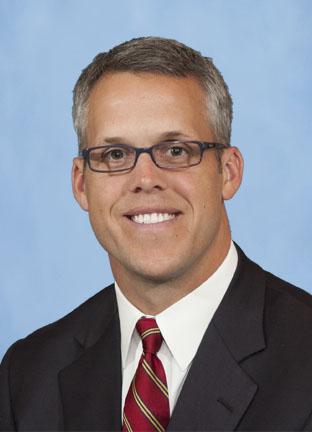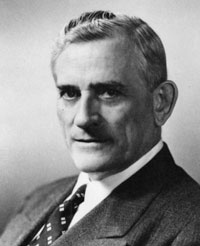
At U-M’s Conrad Jobst Vascular Research Laboratories, surgeon-scientists are developing new approaches to prevent and treat deadly blood clots and other vascular disorders.
We often think of the operating room as the surgeon’s sphere, picturing them dressed in scrubs, bent over a patient as they perform a complex, life-saving operation. But this view is far from complete.
The Department of Surgery at the University of Michigan Health System has a long tradition of supporting surgeon-scientists in shaping the future of medicine through discovery — and nowhere is that more evident than at U-M’s Conrad Jobst Vascular Surgery Research Laboratories.
Researchers at the Jobst laboratories are invested in solving some of the thorniest challenges in vascular surgery and medicine. Their work is expanding the scientific understanding of vascular physiology at the molecular level to better explain the formation of life-threatening blood clots, how the body clears clots, and the long-term effects they can leave in their wake. Jobst researchers are also developing improved laboratory models for studying vascular diseases, and new compounds to treat and prevent clotting without the bleeding risk of standard blood thinners.
“In the clinic, we strive to deliver the best possible patient care to improve the lives of individual patients — but the research part of what we do is really what will make the biggest difference to the greatest number of people here and across the world,” says Thomas W. Wakefield, M.D., the James C. Stanley Professor of Vascular Surgery and head of U-M’s Section of Vascular.
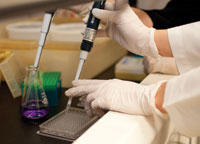
The diverse work underway at the Jobst laboratories also includes new approaches to stop bleeding caused by devastating torso wounds on the battlefield — with applications on the civilian side for car crashes and other major trauma — that are being championed by Jon Eliason, M.D., the S. Martin Lindenauer Collegiate Associate Professor of Vascular Surgery, along with research into the development of abdominal aortic aneurysms, which can claim a life in minutes.
In April 2012, the Jobst laboratories moved to U-M’s North Campus Research Complex, where the investigators’ office and research space could be brought together contiguously for the first time since the laboratories were established in 1989. Already modeled on cooperation and cross-pollination, the Jobst laboratories were a perfect fit for NCRC’s founding vision of collaboration and its mission to “expand the university’s capabilities as one of the nation’s top translational research institutions” — meaning it specializes in rapidly translating laboratory findings into practical applications.
Preventing clots, saving lives
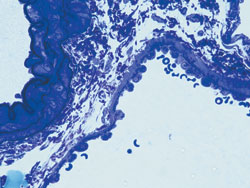
Rather than focusing on clotting factors that lead to the formation of clots, Jobst researchers are among a handful of scientists pursuing a different target — the inflammation that accompanies a blood clot.
“We have found if you inhibit the inflammation, you can actually limit the clot-forming ability,” says Wakefield, “and by doing that we potentially have much less bleeding risk while still getting the effect that we want.”
Following three clinical studies to identify biomarkers to predict the likelihood of blood clot formation, the U-M is preparing for the first human trial of a compound that inhibits one of a family of molecules known as selectins, which are associated with inflammation.
Daniel D. Myers, D.V.M., M.P.H., director of the Conrad Jobst Vascular Surgery Research Laboratories and associate professor of surgery, has partnered with Wakefield since 1998 on a number of projects related to clotting. He places special emphasis on understanding the role of aging on the development of clots.
“We know that age is one of the biggest risk factors in the development of blood clots,” says Myers. “No one yet really understands the mechanisms behind why that occurs. It’s more than just the fact that you’re older, less active and are starting to have other medical problems. There are actual changes taking place in the physiology.”
His research is also exploring why deep vein thrombosis (DVT) — a dangerous clot in a deep vein and the leading cause of preventable hospital deaths — is more likely to occur in cancer patients.
“We’re just starting to look at how the inhibition of selectins might slow down the metastasis of cancer cells,” says Myers, who holds a joint appointment with the Unit of Laboratory Animal Medicine. “People with cancer also have a high potential for developing DVTs. So the question is whether the same selectin therapy used for DVT might also help in decreasing one’s cancer burden.”
Meanwhile, other Jobst investigators are tackling other vascular puzzles. For example, the laboratory of Jobst researcher Peter K. Henke, M.D., the Leland Ira Doan Research Professor of Vascular Surgery, is exploring the link between the inflammation seen in disease states such as sepsis and pneumonia, and the formation of blood clots; a better understanding of the mechanisms driving the relationship could lead to new treatments that could save countless lives. And research investigator Jose A. Diaz, M.D., is studying the role of statins in reducing venous thrombosis and has identified new triggers to clot formation.
Building the next generation of surgeon scientists
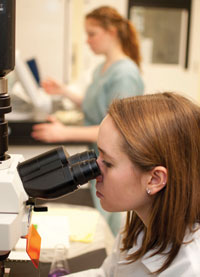
The laboratories were founded with an endowment from the late Caroline Jobst, in memory of her husband, Conrad, whose own venous disease led him to found a company to produce medical hosiery. Famously, relief caused by the pressure differential in the deep end of a swimming pool led Jobst to create his first pair of gradient compression stockings.
Today, not only is cutting-edge research performed in the Jobst Laboratories, but they serve as a training ground for future academic vascular surgeons. Educational opportunities — supported in part by a prestigious vascular training grant from the National Institutes of Health — extend to undergraduate students, medical students, residents and fellows.
Educational excellence is written right into the laboratories’ mission statement, which hangs prominently in the office hallway along with posters of the luminaries who have given the annual Jobst lecture — including doctors Michael DeBakey, James DeWeese and Lazar Greenfield. The 2013 speaker will be James C. Stanley, M.D., a director of U-M’s Samuel and Jean Frankel Cardiovascular Center and former head of the Vascular Surgery Service, who was instrumental in the establishment of the laboratories.
“We are very proud that the Conrad Jobst Vascular Surgery Research Laboratories are helping to train a new generation of researchers who are dedicated to pursuing the most important issues in vascular surgery and medicine,” says Wakefield.
To learn more about the laboratories, please visit http://jobst.lab.medicine.umich.edu/.
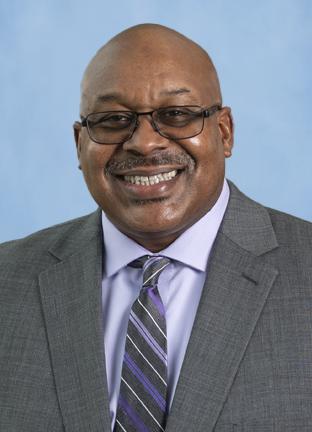
Daniel D. Myers, DVM, MPH, DACLAM

Thomas W. Wakefield, MD
